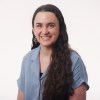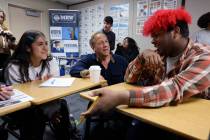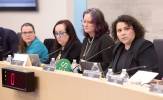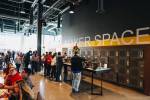‘An opportunity they’d never get otherwise’: High school team wins NASA challenge, again

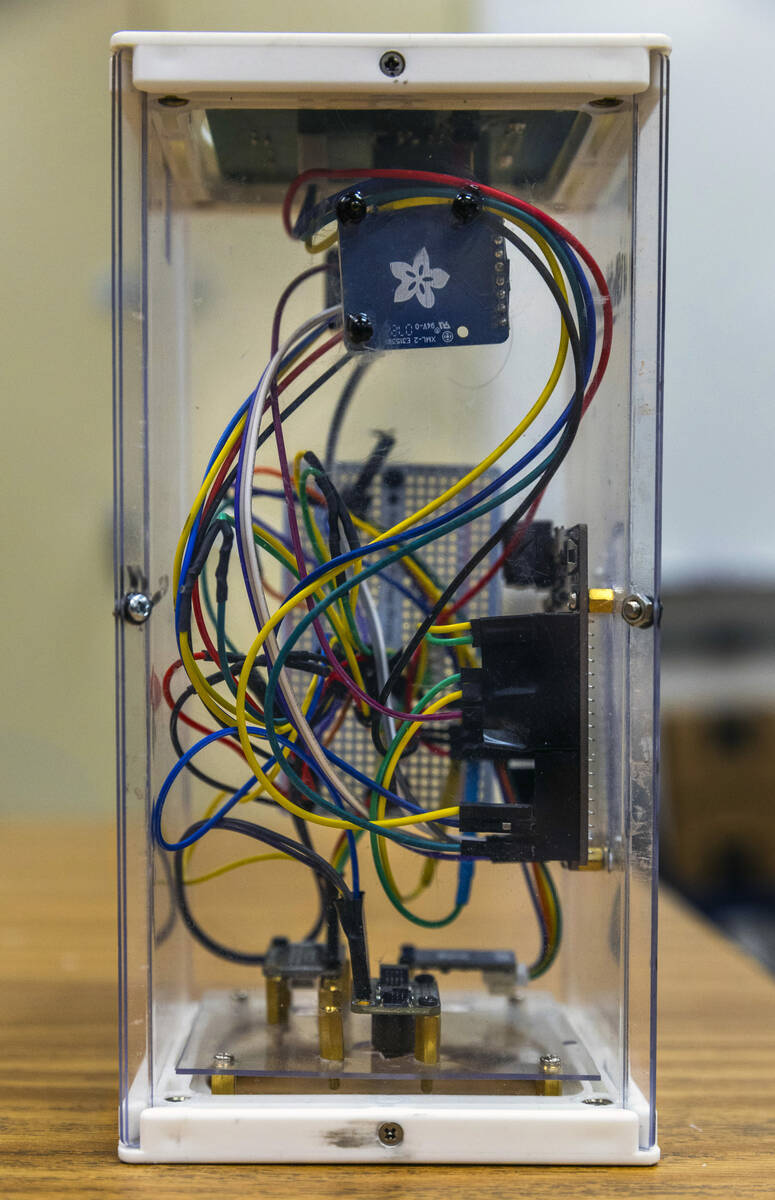







About 20 teenagers at Durango High School spent their after-school hours on Valentine’s Day learning how to solder and talking via video conferencing with NASA engineers.
For a second consecutive year, Durango High is among 60 national winners of a NASA student challenge announced in late January. One other Nevada team, from Herz Middle School in Reno, is also among the winners.
The TechRise Student Challenge is a science, technology, engineering and math contest for U.S. middle and high schools. It’s managed by NASA’s Flight Opportunities program and administered by Future Engineers.
Durango’s experiment will use multispectral imaging to survey hazards, terrain and objects over a simulated lunar surface.
It will be tested on a NASA-sponsored commercial rocket-powered lander this summer over a test field that looks like the surface of the moon.
“For me, I’m very excited for the kids,” said Ret. Air Force Lt. Col. Jason Kimbel, a senior aerospace science instructor at Durango High.
TechRise Student Challenge’s ties to NASA gives the students an opportunity they’d never get otherwise, Kimbel said.
Last year, Durango’s winning team was part of the school’s Space Force Junior ROTC program. This year, students from across the campus were invited to participate.
In 2021, Durango was the first high school in the nation to transition from an Air Force Junior ROTC unit to the U.S. Space Force.
Since the TechRise project is an after-school program — not part of a class like last year — students aren’t stressing about grades, Kimbel said.
‘Good opportunity to get some hands-on experience’
Stacy Lopez, a 17-year-old junior who is one of the team leaders for the project, wants to go into the engineering field and applied to participate in the challenge.
“I thought it was a good opportunity to get some hands-on experience,” she said.
As a challenge winner, Durango’s team — which is named “Team Khonsu,” a nod to the Egyptian God of the moon — will get $1,500 to build its payload and a flight box to put it in.
The experiment will be tested this summer on a rocket-powered lander operated by Pennsylvania-based company Astrobotic Technology. Durango’s payload will fly for about two minutes at the Mojave Air and Space Port in Mojave, California.
The flight will likely happen in June, Kimbel said. Students won’t attend the event but will receive data back that will be analyzed next school year.
Working in teams
In January, juniors and seniors at Durango who are in advanced classes in subjects such as calculus, physics and computer science were given the chance to apply to participate in the challenge.
In total, 21 students initially signed up, although numbers have fluctuated slightly since then.
While working on the project, students are completing a variety of hands-on tasks — “a little of everything” — including wiring and software coding, Kimbel said.
There are four teams. Three are led by JROTC students who were involved in last year’s TechRise challenge.
Each team meets two or three times a week, primarily on Wednesdays, for a total of four or five hours a week.
Each team will build the experiment using the same design, and one will ultimately be picked to send to NASA. The building process is slated to begin within two weeks.
‘Check, check and check again’
Kyle Hickman, a 17-year-old senior, was part of the JROTC team last year that competed in the challenge. This year, he’s project manager.
He has enlisted in the U.S. Army and hopes to later use the GI Bill to pay for his college education to study engineering.
Through Hickman’s experiences in the challenge, he learned: “Check, check and check again.”
Something may work now, he said, but it may not work again.
Hickman said he’s also learning how to lead a team, noting it’s relevant in the corporate world.
Jodani Paris, an 18-year-old senior, was project manager last year and this year, he’s a team commander.
Paris said he was surprised the school was selected as a TechRise winner for a second year.
In addition to working on the project, Paris is waiting to hear back this spring about whether he’ll be accepted into the U.S. Air Force Academy.
The academy has only a 11 percent acceptance rate, he said. “It’s a very hard place to get into.”
Paris said he has been preparing since his freshman year of high school and that he knows he can get in, even if he has to try again.
If he doesn’t get into the Air Force Academy, he plans to attend Embry‑Riddle Aeronautical University in Arizona.
Paris hopes to pursue a mechanical engineering degree and then earn an advanced degree in physics.
For Lopez, her advice to other students is that if an opportunity presents itself, “don’t hesitate if you’re not experienced.”
Another thing she learned by participating in the NASA challenge: “Being realistic in our ideas but holding that ambition.”
Contact Julie Wootton-Greener at jgreener@reviewjournal.com. Follow @julieswootton on X.



